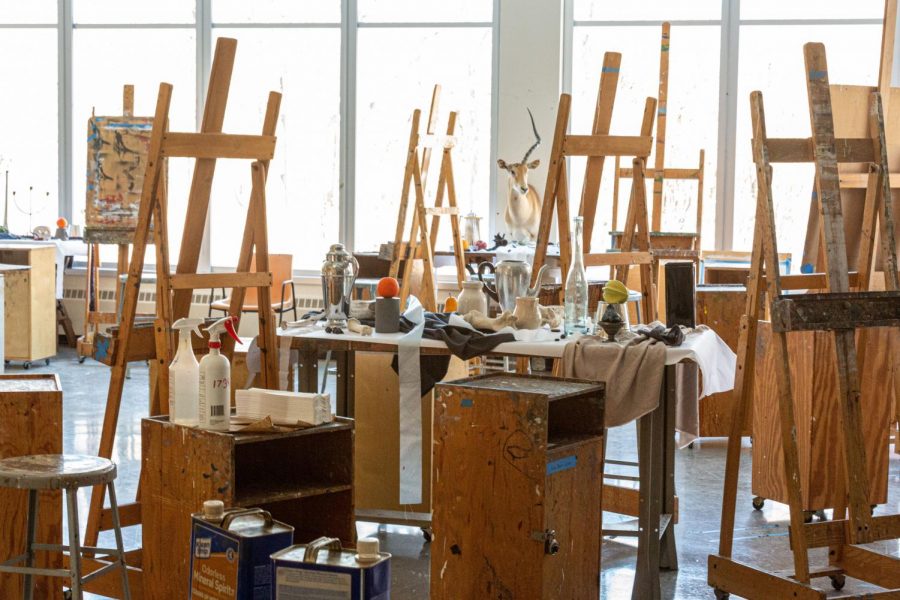VMA Department professors seek to perfect virtual experience
Feb 1, 2021
Since COVID-19 began, Grand Valley State University’s Visual Media Arts Department has had to make significant alterations to most of their courses.
Professors have had to stretch themselves to be innovative and creative in order to accommodate virtual learning, as classes of the arts are typically made for a more hands-on experience. With almost two full semesters of adjusting to this new way of teaching, professors are finally finding their niche.
Associate Professor of Drawing Tim Fisher said that while adjusting his classes from being entirely in-person to fully online has been successful, it has also been labor-intensive.
Fisher said that the people who trained him for virtual teaching this past summer have been huge contributors to his success. He has found that in his drawing classes, going more low-tech has actually proved to work well for him and his students.
In order to help his students get the most out of their class, Fisher made a low-tech helmet that can record two screens at once.
This helmet allows students to see exactly how Fisher views various drawing styles, while simultaneously allowing him to better explain things on a different screen.
Fisher said this new way of teaching drawing is an opportunity that wouldn’t have been possible in a typical classroom.
“They get an exact experience that isn’t possible in a normal demonstration,” said Fisher.
Associate Professor of Film and Video Production Suzanne Zack said that she has spent a lot of her time designing exercises and activities that help students engage with the material and step away from their computers for a while.
In Zack’s Media Production One class, students are challenged to film something in whatever location they are in and upload the shot. The class then looks at what they filmed and discusses it together.
Throughout the process of online learning, Zack said she has found that teaching students how to edit has proved to be more effective when taught virtually.
“We can go deeper into the software and have more one on one time talking about what each student needs to learn,” said Zack.
Similar to Zack, a visiting professor in the Visual Media Department, Dulcee Boehm, has designed each class session to include times when both her and her students can get up and physically move around to get away from the computer screen.
Boehm currently teaches Making and Meaning, and Space Studio classes and has facilitated a remote site exchange between the Kentucky College of Art & Design Space Studio class and her own.
Although some elements are different, Boehm made a point to structure her virtual classes similar to the way that they were when they were taught in person. She said she feels that connecting as a group is still important in order to actually get to know students’ goals and ideas individually.
In the process of crafting the ideal online classroom, Fisher found that conversing with students on how to make online learning a better experience has been the most helpful.
“I found that staying open and engaging the students about making the online course better and really listening to their opinions and explaining things really made this a positive experience,” said Fisher.
Zack said she has also found that communicating and connecting with students during a time when physical contact is limited has been essential to the success of the class.
“It is more important than ever to make a connection with students and to keep in contact through email or Zoom to make sure each student is getting value from the class,” said Zack.
Boehm said she hopes that students will benefit from this period of online learning by being able to figure out what works best for them for the future.
“My hope is that we can all see the possibilities and the limitations of working remotely,” Boehm said. “I think in the long-term it could be equally valuable for someone to realize they really thrive in a remote learning context or that they find it a real challenge.”
























